Image above by Kevin from The Beginning at Last

There Are Three Types of Mammals
Placentals, Monotremes, and Marsupials
All mammals are warm-blooded, have fur, and produce milk. However, there are three main types of mammals, placentals, monotremes, and marsupials, distinguished by how they give birth. Placentals give birth to well-developed young, and they nourish their young in the uterus through the placenta. Examples include gorillas, humans, whales, rodents, tigers, and bats. Monotremes lay soft-shelled eggs. Examples include the platypus and the echidna.
Then we have Marsupials, which give birth to small and underdeveloped young. Most female marsupials have pouches. Examples include kangaroos, wallabies, wombats, possum, opossum, Tasmanian devils, and koalas. Below is a kid friendly overview of the three types of mammals.
Marsupials on Three Continents
Close to 70% of the 334 extant marsupial species are concentrated on the Australian continent, including mainland Australia, Tasmania, New Guinea, and nearby islands. The remaining 30% are distributed across the Americas, primarily in South America. The Virginia opossum is the only marsupial native to the United States, but it is quite common. For example, we have lots of them in our neighborhood in Dallas. It should also be noted that there are a lot of marsupial fossils in Antarctica, which means that marsupials once lived there.
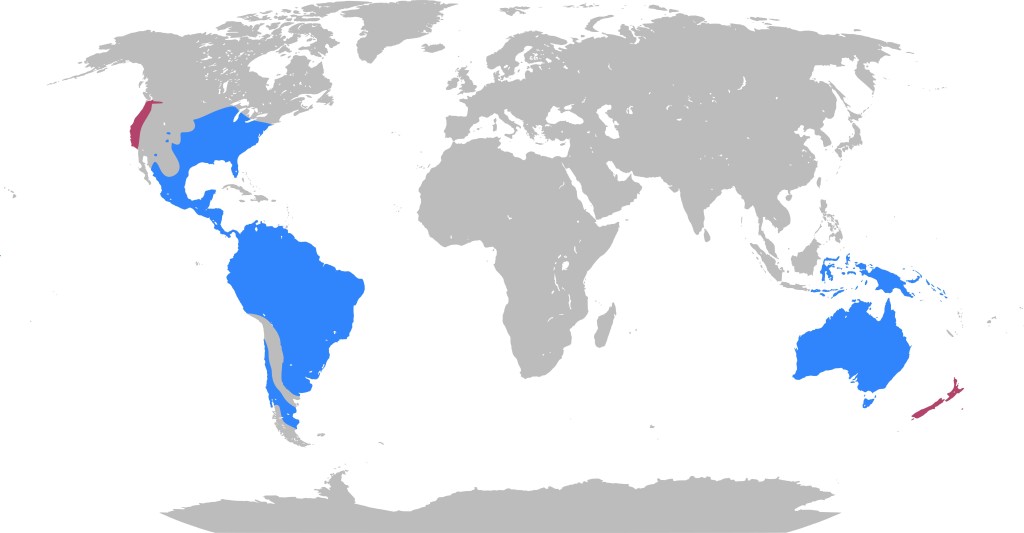
DNA evidence supports a South American origin for marsupials, with Australian marsupials arising from a single Gondwanan migration of marsupials from South America, across Antarctica, to Australia. These continents were connected and part of the supercontinent Gondwana back then. The ancestors of the marsupials, the metatherians split from placentals around 100 million to 120 million years ago during dinosaur times.
Bamboozled by an Opossum
We’ve found opossums in our house, behind our laundry machine. We’ve seen them along the street, on lawns in the neighborhood and we’ve seen them climb trees. They are pretty common in our neighborhood. It should be noted that they are not possums even though they are sometimes called that. Possums is an Australian relative to the Opossum.
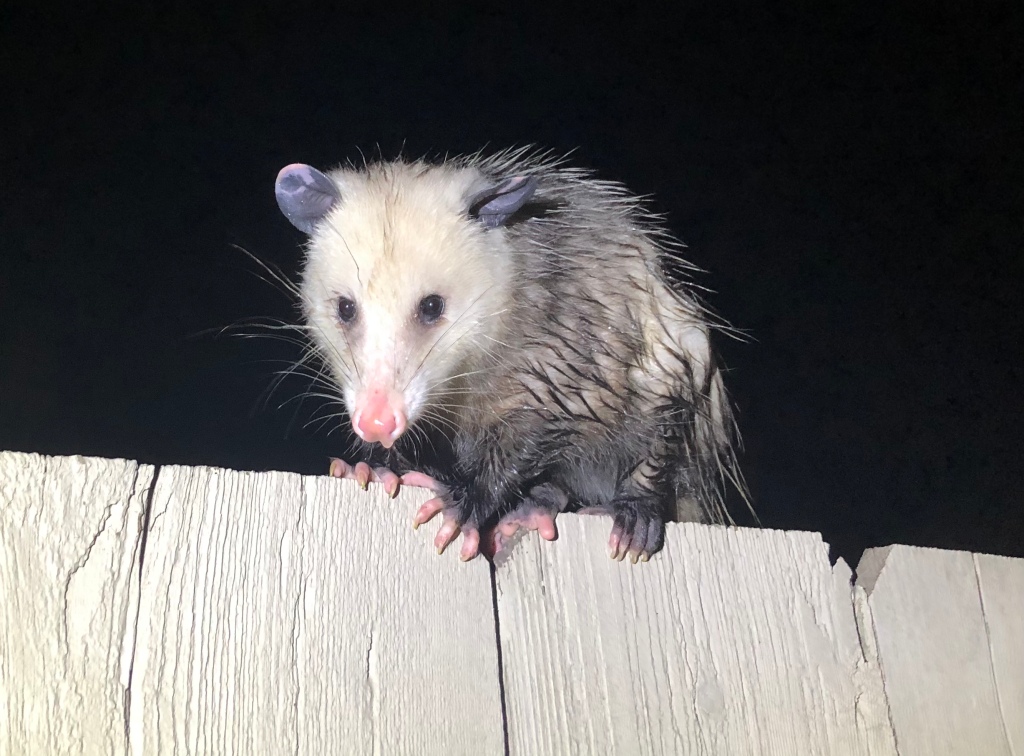
One day when my wife and I were out walking the dogs we saw an opossum lying on the alleyway behind our house. He looked dead. However, when I checked, he was warm and appeared to be alive even though he was unconscious. We put him in a box containing a soft blanket and took him to the veterinary. We were willing to pay for any treatment or surgeries needed. At the veterinarian he woke up and they later placed him in a nature sanctuary. We did not need to pay anything.
Later on, we learned that when an opossum is threatened or harmed, they will “play possum“. They mimic the appearance and smell of a dead animal. This response is involuntary, like fainting, and not a conscious act. That might have been what was going on. So, I might have been bamboozled by an opossum. Bamboozlement seems to be the story of my life. Luckily, he was a male and the veterinary said it looked like he had been hit by a car, so us taking him to the veterinary probably did not do much harm. However, the “playing possum” thing is something to keep in mind with these animals.
Australia and our Photos of Marsupials
When our kids were young, we traveled to Australia where we encountered a lot of marsupials in the wild, in nature preserves and at zoos We encountered a lot of kangaroos but also wombats, koalas, and Tasmanian Devils. I can add that checking out kangaroos and other marsupials was not the only thing we did in Australia. We also spent a week in Great Barrier Reef where we did snorkel and scuba diving.
The first picture below was from our visit to the Blue Mountains. We stopped to have lunch, and I decided to go and take a leak. As I approached a bush, I heard some noise and when I looked behind the bush, I saw that there was a kangaroo behind it. What you see in the picture below is what I saw. The kangaroo was just two yards away. He seemed to be as startled as I was, and we stared at each other for a few seconds. I had my camera hanging around my neck, so I decided to take a photo. Then he hopped away. I am so glad I did not pee on his lunch.

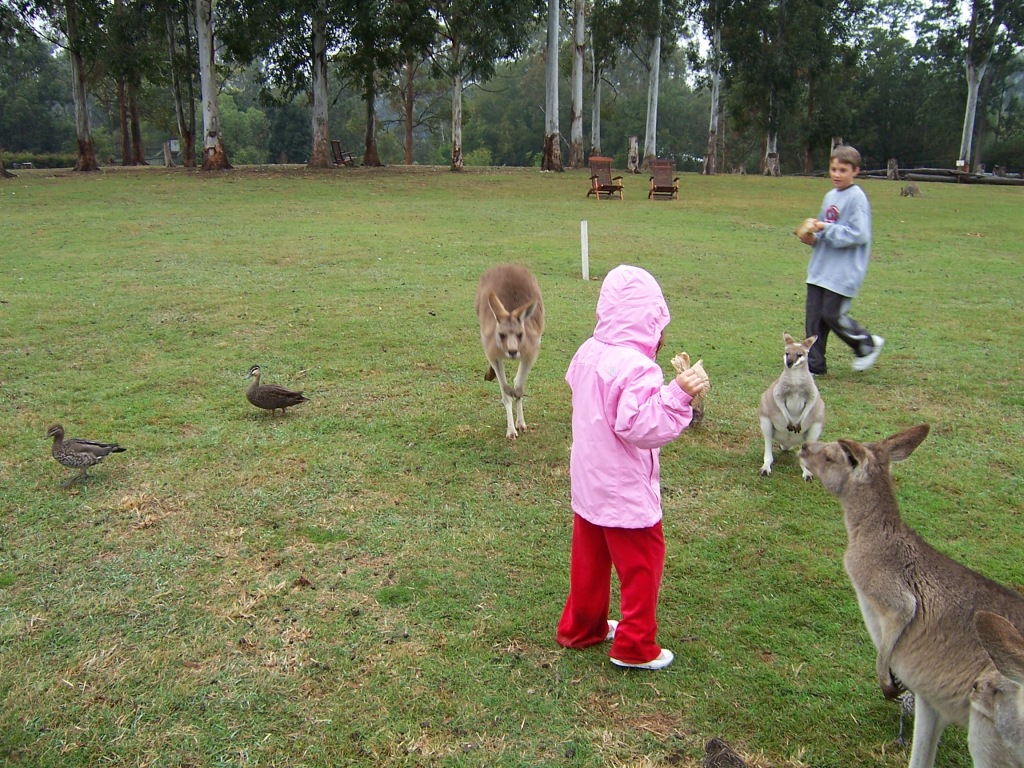
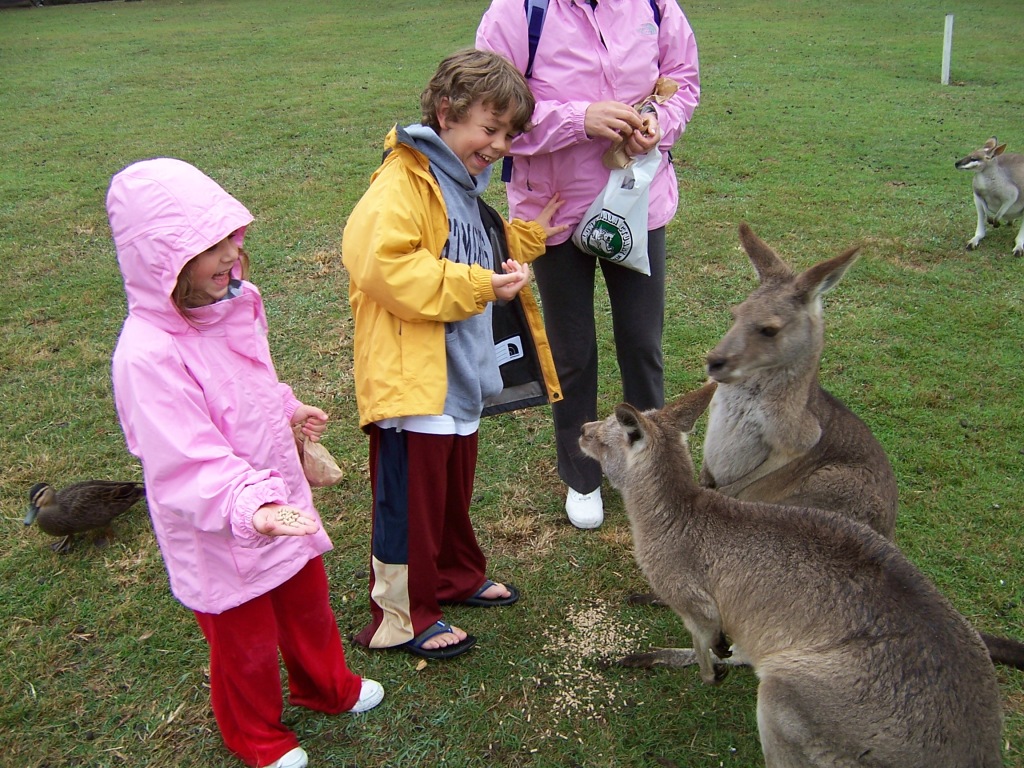
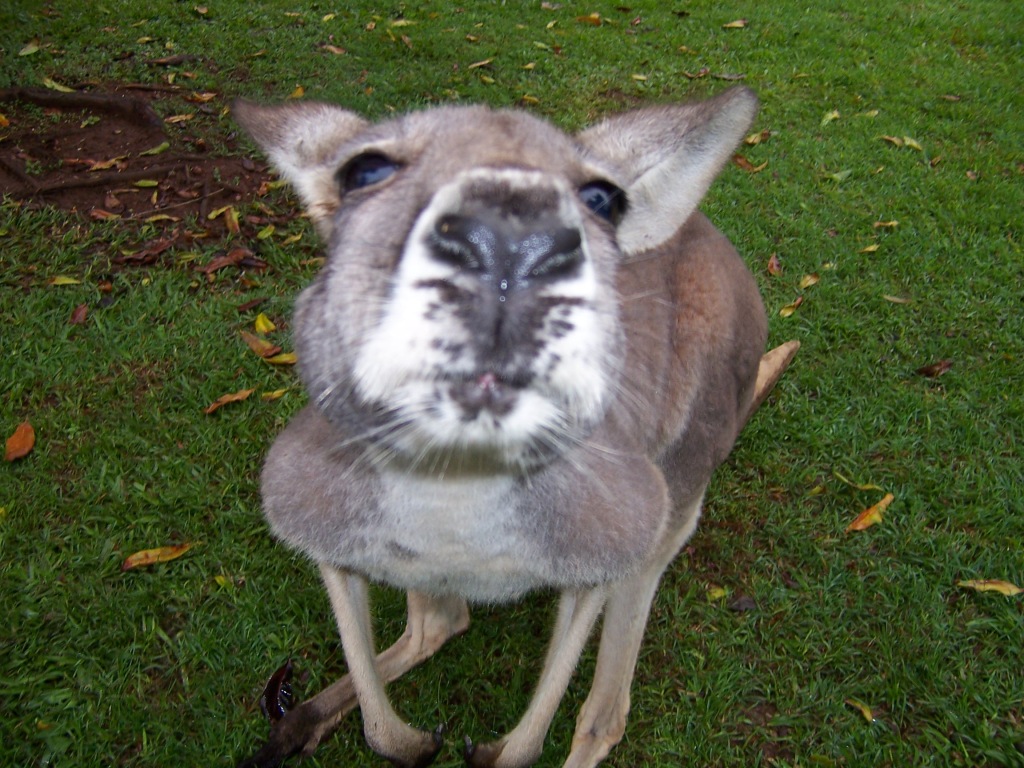
Note : Koalas are often called Koala bears, but they are not bears.
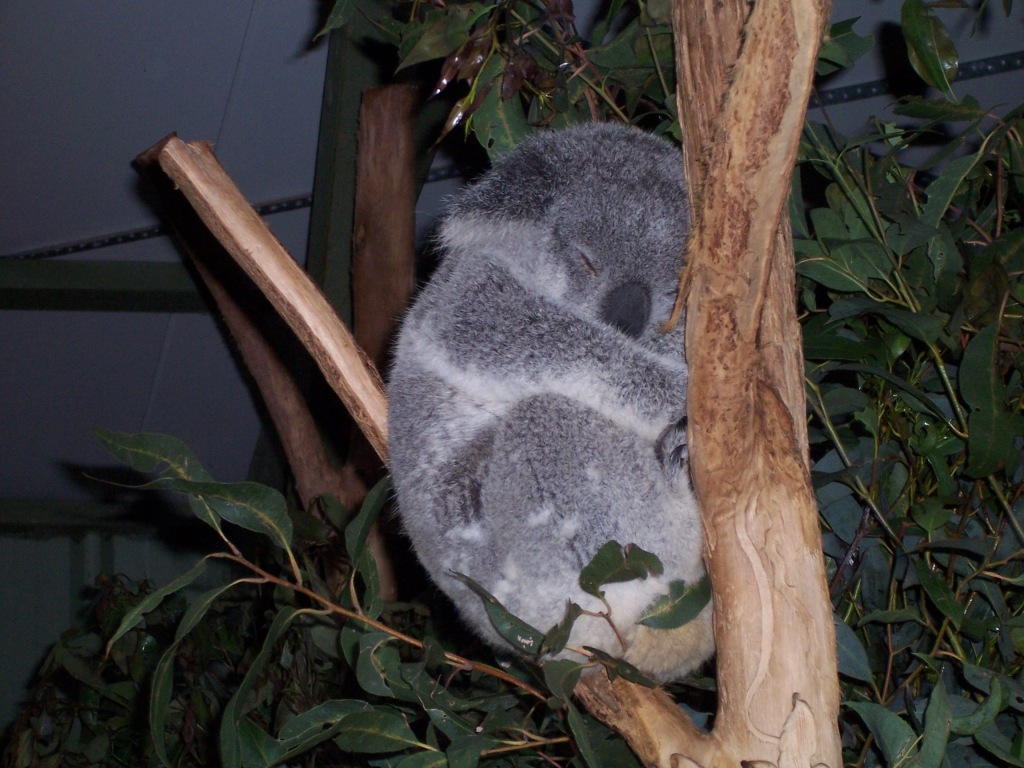
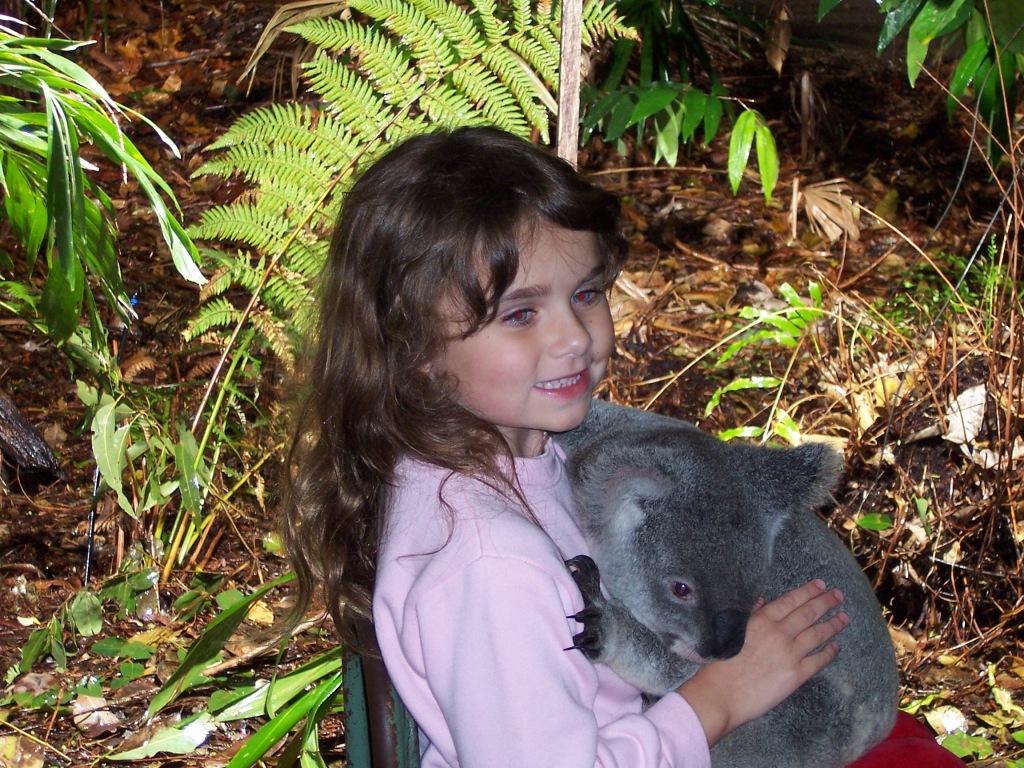

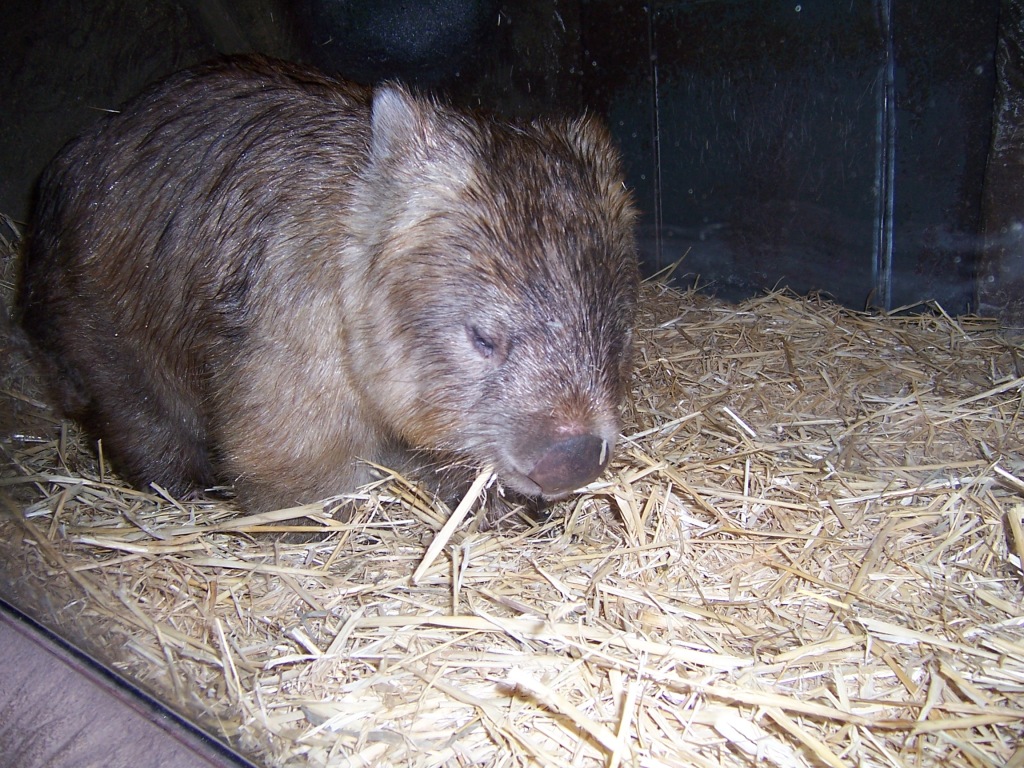
One interesting fact about Wombats is that they produce cubic shaped poop. This makes the poop stackable, and the wombats use it to mark their territory and attract mates.


Another very informative and entertaining post, Thomas! Those pictures of your trip are fantastic. Thank you so much for sharing them, along with your knowledge.
And I am sure the kangaroo was glad you didn’t pee on his lunch too! 😄
LikeLiked by 1 person
Thank you so much for your kind words Kevin. Yes the Kangaroo behind the bush was a little bit freaky. I did not expect that. It’s funny, he seemed startled too, so he must not have heard me coming.
LikeLiked by 1 person
He was likely just as shocked by you as you were by him! lol
LikeLiked by 1 person
Yes I think so. He stopped chewing and we stared at each other for a few seconds, enough time for me to take a photo, and then he hopped off. I thought for a second he might get aggressive and box me, but he didn’t.
LikeLiked by 1 person
Thankfully he was a peace loving kangaroo! 😄
LikeLiked by 1 person
Ha ha, that is a good way to put it
LikeLike
HI Thomas, thank you for this interesting post. I have not yet been to Australia but I have seen pictures of all of these creatures. I would like to see them in real life. Maybe TC will get Australia this year – I live in hope. Your info about Wombat poop is also interesting.
LikeLiked by 2 people
Yes flora and fauna is different there, I think even compared to Africa, so it should interest you. Wombat poop is funny. Thank you so much for your kind words Robbie.
LikeLike
Very fun reading your post and seeing the photos of the animals. I think we have opossums here too. 🙂
LikeLiked by 2 people
Thank you so much Barbara. Yes I think rhe opossums are in most of Texas.
LikeLiked by 1 person
I’m a lifelong learner, Thomas, and you made my day with this outstanding lesson on Marsupials.
LikeLiked by 2 people
Thank you so much for your kind words Grant at Tame Your Book. I am glad you liked it.
LikeLiked by 1 person
Fascinating post! Love the photos!
LikeLiked by 2 people
Thank you so much for your kind words Dawn
LikeLike
Fascinating and I am grateful I could brush up on my rusty biology knowledge 🙂
LikeLiked by 2 people
Thank you so much Patricia.
LikeLiked by 1 person
We have opossums around here, I’ve seen them a few times and they just go about their business. Out at the Safari Park they have an enclosure with wallabies where you can go in amongst them. They also just go about their business. I don’t think they let you go in with the kangaroos, though, presumably because the kangaroos might kick you or punch you in the face …
LikeLiked by 2 people
Safari Park? I thought you lived in the US, in California. Anyway, you are right about Kangaroos punching and kicking. I was concerned about that when I stumbled upon the wild kangaroo above. The way he was angrily staring at me I was afraid that might happen. I took out my camera, took a photo, and he jumped off.
I can add the kangaroos in the other pictures were in a nature preserve and pretty tame.
LikeLike
Oh we do! The “Safari Park” is what used to be called the “Wild Animal Park” and is run by the San Diego Zoo. They changed the name to “Safari Park” a long time ago and it’s only in the last year or two that I’ve given up calling it “Wild Animal Park” in favor of the new name lol
LikeLiked by 1 person
Oh I forgot about the San Diego zoo. I’ve been there once a long time ago. That might the best zoo in the US. We didn’t do the Safari Park, but I’ve heard about it. That is quite amazing. When you said safari park I was thinking about Africa and Australia, they have them there. Well there is also San Diego Zoo. Sometimes I wish I could move to California but it is so expensive.
LikeLiked by 1 person
Charlee: “Look, it’s our frenemy Jill!”
LikeLiked by 2 people
Charlee, are you talking about the Opossum?
LikeLike
Charlee: “Yes! She pretends to be a cat so she can hang around and get food and interfere with our adventures!”
Jill: “*** HISSS *** Am too a cat! Just ask your brother Tucker!”
Chaplin: “Dennis told us all about how Tucker spotted you in the yard and thought you were our legendary sister Trouble the Kitty, but by then Tucker was old and didn’t smell so good.”
Spicoli: “Tucker not smelling good when he had the toots is the understatement of the year, dude.”
LikeLiked by 1 person
Ha ha that is very funny. Those Opposums are tricky, pretending to be dead and pretending to be cats.
LikeLiked by 1 person
Thanks for the informative post about different types of mammals in general and marsupials in particular. I actually hadn’t known that opossums were marsupials. Always fun to learn new things!
LikeLiked by 2 people
Thank you so much David. When I was younger I thought mammals were animals defined as giving live births and not eggs, but now I know that is not the distinction. Placentals, monotremes, and marsupials are quite different with respect to how they give birth. Kangaroos and opossum are therefore quite different from all the other mammals we are used to, and they split 100-120 million years ago long before dinosaurs stopped ruling earth. I think of opossum as like a wild cat or a rabbit, maybe a large rat, but they are an entirely different infraclass. I find that fascinating.
LikeLiked by 1 person
A fun look at marsupials, Thomas. The only one I’ve seen in person is an opossum. They would sneak into our house in Vermont through the cat door to pig out on cat food. I’d carry them outside (playing dead) and leave them to “wake up” on the wood pile. 🙂 I’d love to see the kangaroos, koalas and the rest of them in Australia someday. The photos of your kids are so cute. What fun!
LikeLiked by 1 person
Thank you so much Diana. The kids had a lot of fun in Australia. The highlight was the Great Barrier Reef, which unfortunately is having some trouble lately due to ocean acidification, global warmings evil twin. But the Kangaroos in the nature preserve were great. They were essentially tame. The kangaroo I encountered in the bush was wild and they can be dangerous.
LikeLiked by 1 person
The one in the wild looked a little menacing. I’m glad he hopped away. I scuba dive and it pains me that the reefs are dying. They grow so very slowly. From NOAA: “With growth rates of 0.3 to 2 centimeters per year for massive corals, and up to 10 centimeters per year for branching corals, it can take up to 10,000 years for a coral reef to form. Depending on their size, barrier reefs and atolls can take from 100,000 to 30 million years to fully form.” That’s almost like being gone forever.
LikeLiked by 1 person
Yes, the kangaroos in the wild can become aggressive, which is why I was a little bit worried. We both startled each other. I am worried about the coral reefs too. I’ve read about scientists trying to modify the DNA of the coral polyps so that in the future they could be more resilient to ocean acidification and the changing temperatures in the oceans. Desperate measures for depserate times. BTW NOAA is on the chopping block. Unfortunately, farmers need their weather forecasting and the world need their research.
LikeLiked by 1 person
I know that NOAA is in jeopardy. Don’t get me started on how diabolical that decision is.
LikeLike
good to know about o-possums! & cutest picture ever of a kangaroo!
LikeLiked by 1 person
Thank you so much da-AL
LikeLiked by 1 person